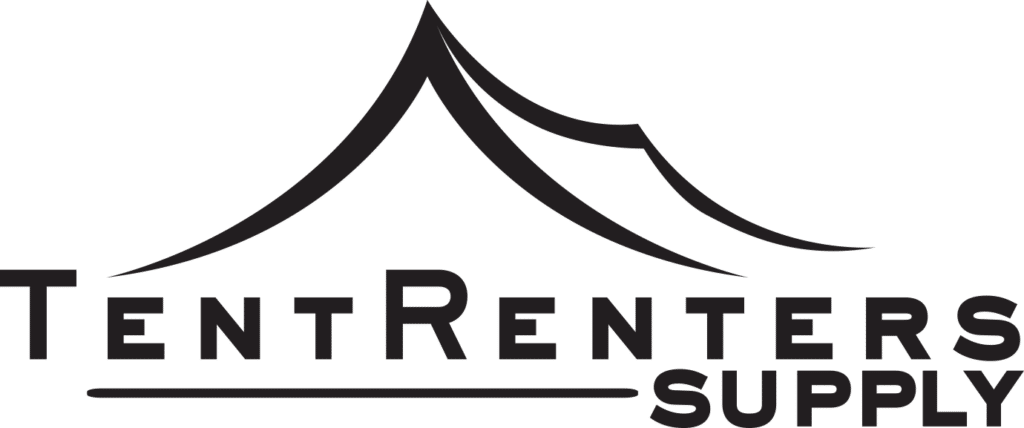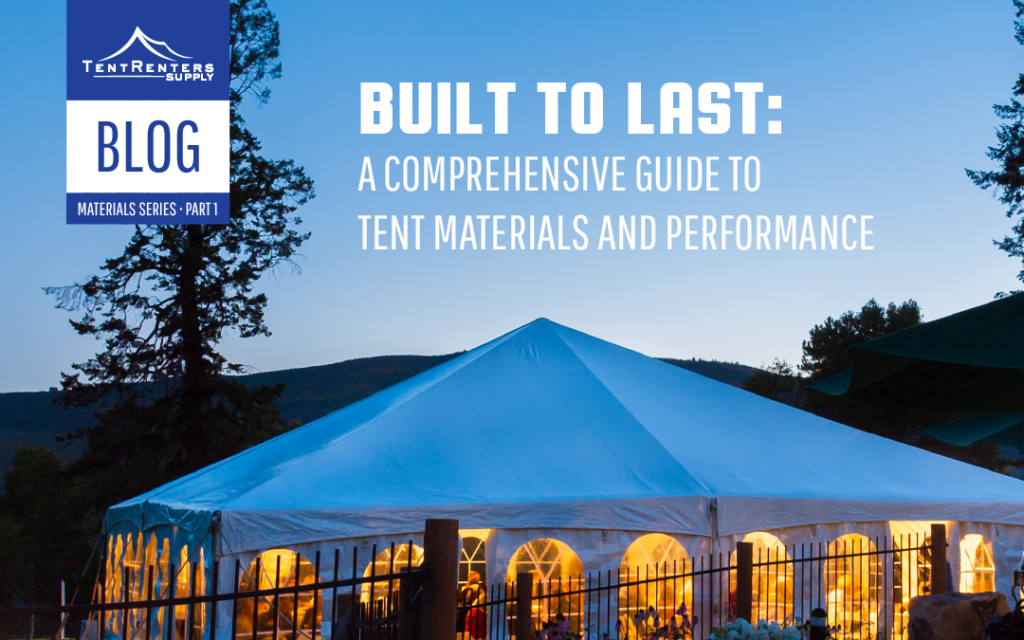Built to Last: A Comprehensive Guide to Tent Material and Performance, Event Tents, Events, tent material
Built to Last: A Comprehensive Guide to Tent Materials and Performance
Part 1: The Basics of Tent Materials
Welcome to Tent Renters Supply’s comprehensive six-part blog series on the fundamentals of tent materials. As a leading tent manufacturer serving industries ranging from carnivals and fairs, large-scale cultural events, weddings, farming, construction, disaster relief, and everything in between—we understand the critical importance of choosing the right materials for every application.
In this series, we will explore various aspects of tent materials, including weights, fire ratings, strengths, performance, tension loads, and manufacturing methods. Join us as we delve into the world of tent materials, providing you with valuable insights and knowledge to make informed decisions for your tenting needs.
Let’s get started!
Decoding Material Weights
When it comes to tent materials, understanding how they are measured can help you choose the right one for your needs.
Our tent vinyl material is generally measured in ounces, and here’s what that means: a higher ounce weight typically indicates a thicker material.
For industrial tent tops, the industry standard is typically 16 oz. However, lighter materials weighing around 13 to 14 oz. can also be used, especially for sidewalls or tents in specific colors other than white.
On the other hand, if you’re looking for a structure tent that will be set up for extended periods, you can opt for higher ounce materials, like 18 oz. and up. Keep in mind that these heavier options are more suitable for long-term installations, as the added weight can make setup and takedown more challenging. It’s all about finding the right balance between durability and ease of use (and budget) for your specific tenting needs.
Translucent vs. Sunblock
When it comes to tent fabrics, there are two options to consider: translucent and sunblock.
Translucent materials have lower ounce levels, allowing some light to pass through the fabric. This can create a beautiful lighting effect, especially for carnival tents. It’s like having a soft glow inside the tent, adding a touch of enchantment to the atmosphere.
On the other hand, sunblock materials, also known as blockout, have the ability to block light from passing through. These fabrics, usually found in industry-standard 16 oz vinyl tents, come with an additional layer of scrim for added durability. One of the advantages of sunblock materials is that they can keep the area under the tent cooler by blocking out sunlight. While there isn’t a significant temperature change, it can make a difference of around 10 degrees Fahrenheit, though there isn’t scientific evidence to support this.
Sunblock tents are a popular choice due to their durability and cost-effectiveness. The blackout layer can reflect light, preventing it from being absorbed by the fabric. However, it’s important to note that sunblock materials are not specifically designed for UV resistance.
When it comes to color selection, most colored tents don’t have the sunblock scrim, allowing light to illuminate the tent’s color. However, there are options available in higher ounce levels with the sunblock scrim, although the color selection may be more limited.
At Tent Renters Supply, we offer both blockout and translucent sidewalls, catering to different needs and preferences. As the industry leans towards sunblock walls for their enhanced durability and cost-effectiveness, we strive to provide our clients with the best options available.
What is Scrim?
The scrim is a middle layer sandwiched between the PVC layers of the vinyl material. Think of it as the reinforcement structure that gives the tent fabric its strength. Like rebar in concrete, it is the reinforcement layer that gives the material its durability and strength.
Scrim can have an extra special feature – the sunblock film. This film can be matched on one or both sides of the scrim to create a shield against light passing through the material. So, not only does the scrim add toughness, but it also blocks out more sunshine, keeping the inside of the tent cooler in the hotter months.
Consider the scrim as the unsung hero of your custom vinyl tent. It’s the backbone that ensures your tent can withstand the elements and the demands of various events.
High-Performance, Fire-Rated Tents
At Tent Renters Supply, we take pride in our expertise in tent manufacturing. That’s why we use only the finest high-performance commercial tent vinyl for constructing our tents—locally sourced and manufactured in the USA.
Our tent vinyl is also flame retardant. It complies with the guidelines set by the NFPA (National Fire Protection Association) 701, the industry standard for flame propagation of textiles and films. This means you can have peace of mind knowing that your tent is equipped with fire-rated materials for added safety during your events.
When you choose Tent Renters Supply, you’re not just selecting a tent – you’re opting for a high-quality, performance-driven solution. Our extensive knowledge and experience in tent manufacturing ensure that every aspect of our tents, including the materials used, is carefully considered to provide you with the best possible experience.
To learn more, be sure to follow our series on the Tent Renters Supply blog—or get in touch with our team today.

